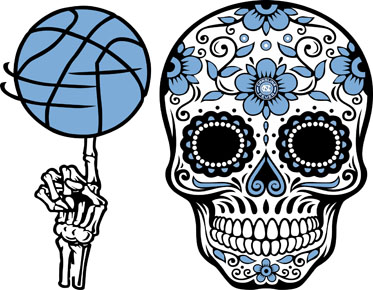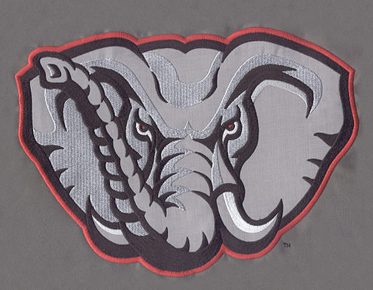Embroidery Magic: Understanding Stitch Types – A Comprehensive Guide for Digitizers
Embroidery, with its rich history and timeless appeal, has evolved into a digital art form through the process of digitization. Digitizers play a pivotal role in transforming designs into intricate stitch patterns that come to life on fabrics. Central to this transformation is a deep understanding of various stitch types, each contributing its own texture, style, and visual impact. In this comprehensive guide, we'll unravel the magic of embroidery by exploring the intricacies of stitch types, offering digitizers valuable insights into the art and science of creating stunning embroidered masterpieces.
1. Running Stitch: The Foundation
of Embroidery
Basic Structure:
The running stitch, also known as a straight
stitch, is the fundamental building block of embroidery. It consists of
continuous straight stitches in a line, providing a simple and clean outline.
This stitch is commonly used for fine details, lettering, and basic shapes.
Applications:
Running stitches are versatile and find applications in various embroidery styles. They are particularly effective for creating delicate linework, intricate details, and outlining designs before applying more complex stitch types.
2. Satin Stitch: Smooth Elegance
and Solid Fill
Characteristics:
The satin stitch, also called a fill stitch,
is characterized by closely spaced parallel stitches that form a smooth, solid
surface. This stitch creates a polished and elegant appearance, making it ideal
for filling large areas and adding a touch of sophistication to designs.
Applications:
Satin stitches are commonly used for text, logos, and areas that require a seamless and polished finish. They can be adjusted for varying widths to achieve different effects, from fine detailing to bold, solid fills.
3. Fill Stitch: Building
Substantial Backgrounds
Construction:
The fill stitch is designed to cover larger
areas with stitches that intersect and overlap, creating a solid background. It
provides a sturdy foundation for more intricate details and is often used to
cover expansive spaces efficiently.
Applications:
Fill stitches are particularly useful for large design elements, backgrounds, and areas that require density. Digitizers use fill stitches strategically to balance the overall composition and create a cohesive appearance.
4. Column Stitch: Enhancing
Outlines with Structure
Structure and Precision:
The column stitch, also known as a satin
column or column fill, is similar to the satin stitch but is specifically
designed for narrow columns. It provides structure and precision for outlining
elements and creating defined edges, especially in intricate designs.
Applications:
Column stitches are indispensable for creating narrow lines, borders, and outlining detailed elements. They contribute to the overall clarity and definition of designs, ensuring that fine lines are well-represented.
5. Stitch Direction: Controlling
Texture and Visual Flow
Single and Multi-Directional Stitches:
Controlling the direction of stitches can
significantly impact the texture and visual flow of an embroidered design. Single-directional stitches create a smoother appearance, while
multi-directional stitches add texture and dimension.
Applications:
By strategically varying stitch directions,
digitizers can enhance texture, simulate shading, and create visual interest.
This technique is often employed in digitizing realistic textures such as fur,
grass, or fabric.
6. Complex Fill Stitches: Adding Texture and Detail
Pattern Fills and Specialty Stitches:
Beyond basic fill stitches, complex fill
stitches encompass a range of patterns and specialty stitches. These can
include geometric shapes, zigzags, waves, and other intricate patterns that add
texture and visual complexity to embroidered designs.
Applications:
Complex fill stitches are employed when a more dynamic and textured appearance is desired. They are often used for decorative elements, backgrounds, or areas where a unique and eye-catching texture is required.
7. Feather Stitch: Elegant Curves
and Decorative Flourishes
Graceful Curves and Openwork:
The feather stitch, known for its graceful
curves and openwork, is a decorative stitch that adds a touch of elegance to embroidery.
It is characterized by stitches that curve outward and then inward, resembling
the feathers of a bird.
Applications:
Feather stitches are commonly used for embellishments, borders, and decorative flourishes. They bring a sense of delicacy and sophistication to designs, making them ideal for projects with a vintage or ornate aesthetic.
8. Chain Stitch: Timeless
Elegance and Artistry
Looped Construction:
The chain stitch is created by forming a
series of interlocking loops, resulting in a continuous line. This stitch type has a timeless and artistic quality,
making it a favorite for adding a handmade touch to embroidered designs.
Applications:
Chain stitches are versatile and can be used for outlines, text, decorative elements, and creating floral motifs. They bring a sense of craftsmanship and authenticity to embroidery, reminiscent of traditional hand-embroidered techniques.
9. Triple Stitch and Bean Stitch:
Reinforcing and Decorative Elements
Enhancing Durability:
The triple stitch, as the name suggests,
involves sewing three stitches closely together. This creates a reinforced line
that enhances durability, making it suitable for areas that undergo more wear
and tear.
Applications:
Triple stitches are often used for outlining and reinforcing elements that require extra strength. The bean stitch, similar in appearance to a triple stitch, is a decorative variation used for adding texture and visual interest.
Conclusion
Understanding the
nuances of various stitch types is essential for digitizers seeking to breathe
life into digital designs. Each stitch type contributes to the overall
aesthetic, texture, and visual impact of an embroidered piece. From the
foundational running stitch to the intricate feather stitch, digitizers wield
these tools to translate artistic visions into tangible, stitched realities. As
the world of embroidery continues to evolve, the artistry of digitization remains at the heart of creating
captivating and enduring embroidered masterpieces. So, whether you're a
seasoned digitizer or a novice exploring the realm of embroidery, may this
comprehensive guide serve as your roadmap to unraveling the magic of stitch
types and elevating your craft to new heights.


